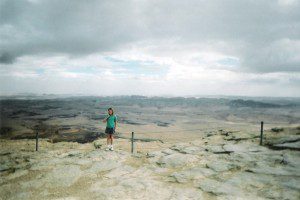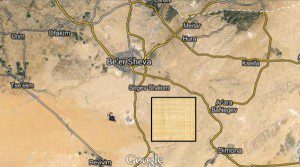 The next chapter of Walter Moberly’s book Old Testament Theology: Reading the Hebrew Bible as Christian Scripture looks at Exodus 16 and the provision of manna in the wilderness.
The next chapter of Walter Moberly’s book Old Testament Theology: Reading the Hebrew Bible as Christian Scripture looks at Exodus 16 and the provision of manna in the wilderness.
In the desert the whole community grumbled against Moses and Aaron. The Israelites said to them, “If only we had died by the Lord’s hand in Egypt! There we sat around pots of meat and ate all the food we wanted, but you have brought us out into this desert to starve this entire assembly to death.”
Then the Lord said to Moses, “I will rain down bread from heaven for you. The people are to go out each day and gather enough for that day. In this way I will test them and see whether they will follow my instructions. On the sixth day they are to prepare what they bring in, and that is to be twice as much as they gather on the other days.”
The Israelites ate manna forty years, until they came to a land that was settled; they ate manna until they reached the border of Canaan. (Exodus 16:3-5,35)
This is a powerfully important story in the history of God’s interaction with Israel that carries over to his mission among all who call on his name.
It is also a story that raises questions. What was manna and how did God provide it? The modern approach is to look for some “scientific” source of this food with the suggestion that it was the sap of a tamarisk tree defended by some. Here Moberly cites Colin Humphrey’s discussion in The Miracles of Exodus: A Scientist’s Discovery of the Extraordinary Natural Causes of the Biblical Stories. But this really isn’t satisfactory, and answer many of the questions raised by Exodus. If we take the numbers literally there were some 2+ million people in the group, 600,000 men plus women and children, and livestock (c.f. 12:3, 17:3). The sap of tamarisk trees in the desert will not feed a group of this size.
 To put this in perspective, at approximately the population density of New York City (8.5 million in 790 km2) two million people require 185 km2. We’ll pack them into 100 km2 – a square 10 km on a side as shown on a screen image map of the Negev. This allows each person (never mind the livestock) a space about 7 m by 7 m. (The present day population of Be’er Sheva is under 200,000.) This is an enormous group wandering in a pretty inhospitable wilderness. The picture at the top of the post is in the Negev. This isn’t exactly the area referred to in Exodus 16. But the whole region is desert, and my impression was that it makes the Arizona desert look quite lush. For the most part it seemed more like the badlands of South Dakota.
To put this in perspective, at approximately the population density of New York City (8.5 million in 790 km2) two million people require 185 km2. We’ll pack them into 100 km2 – a square 10 km on a side as shown on a screen image map of the Negev. This allows each person (never mind the livestock) a space about 7 m by 7 m. (The present day population of Be’er Sheva is under 200,000.) This is an enormous group wandering in a pretty inhospitable wilderness. The picture at the top of the post is in the Negev. This isn’t exactly the area referred to in Exodus 16. But the whole region is desert, and my impression was that it makes the Arizona desert look quite lush. For the most part it seemed more like the badlands of South Dakota.
In fact though, the enumeration of 600,000 men isn’t consistent with the general tone of the Exodus narrative, which often implies a group of a few thousand. Moberly looks as an example at the last verse of chapter 15 after the Israelites had complained about the supply of water and God provided drinkable water: “Then they came to Elim, where there were twelve springs and seventy palm trees, and they camped there near the water.” The implication is that this was an oasis of plenty – and it is plenty for a more modest sized group, but not for 2 million people, complete with livestock.
Nor could Moses speak simultaneously to a group of this size, although the text portrays him as speaking to the Israelites as a whole on multiple occasions. Imagine Moses and Aaron on the field of Michigan Stadium speaking without the aid of amplifiers and then multiply the size of the stands by 20 (or by a factor of 6 if he only addresses the men).
And despite the people’s constant complaints concerning food and water, they had livestock for feasting and sacrifice when Aaron shaped the golden calf for them (32:6).
These details make us look twice at the text. The numbers might be symbolic, or a mistranslation, or an exaggeration. Or they might be anachronism … numbers from a later time written into the text “presumably through the assumption of a continuity between Israel past and present.” (p. 90) Moberly is inclined toward the later explanation. But this isn’t the point of the text. This is a foundational story of the people of Israel, following God through the wilderness. Most likely it is a story passed along orally before it was written down.
Whatever the origins of the narrative, as the narrative is handed on and retold, it acquires ever greater coloring from the contexts of its retelling. This is because the narrative is seen to be a suitable vehicle for the expression of certain recurrent existential issues and questions of identity that are important to the people who cherish the narrative. Because of such a history of prior use, the narrative in its received form may relate somewhat somewhat loosely to its received literary contextualization. One consequence is that it is usually more or less impossible to separate out, or reconstruct, the different elements that have come to constitute the narrative, though sometimes anachronisms can give some clues. (p. 93)
This is an explanation that won’t sit well with many evangelicals, as it is not consistent with our general expectation of inerrant divine revelation. Is it possible that the problem is our expectation of the text rather than with the received text?
What this means for our reading. In any event, Moberly points out that this suggestion that the narrative has a history of being shaped in retelling, if true, has a number of ramifications on the way that we should approach the text. (p. 94)
- First, the large number of Israel as in the millions should not be introduced into one’s imagination with the manna story.
- Second, livestock should not be presumed to be present within the manna story, for this becomes an example of how a story that has had its own history of use may relate somewhat loosely to its received literary contextualization. … [T]he contemporary theologically engaged reader should resist the temptation to produce an integration of divergent narrative elements
In other words we should read the story for the meaning it contains and not worry about harmonizing all the elements of the narrative with other parts of Exodus or the Pentateuch. Yes we can, and should, synthesize the biblical narrative. There is a theme. But heavy-handed harmonization if a mistake. “If in some places a diamond is polished and in other places it is rough, it still remains a diamond.”
- Third, an instinct to rationalize manna as a natural phenomenon … should be resisted as a category mistake.
We should read the multi-layered manna story canonically, and for its theological significance. This doesn’t deny a historical root to the story, but rather leads us away from fixating on (inconsistent) details to concentrating on the big picture.
Some of the lessons to be learned:
Not by Bread Alone. Deuteronomy 8 gives a lesson to be learned from the provision of manna.
He humbled you, causing you to hunger and then feeding you with manna, which neither you nor your ancestors had known, to teach you that man does not live on bread alone but on every word that comes from the mouth of the Lord.
It is through having their hunger met thus that Israel is opened to learning a fundamental principle about human life; not by bread alone is human life sustained, but by responsiveness to the divine will. Material needs are affirmed, but qualified. … One may not unreasonably see significance in the use of the generic ‘ādām, “humanity.” rather than simply “Israel,” as making the point that what Israel learns in this particular way is in a principle of universal applicability. (p. 97)
Jesus articulates this principle of responsiveness to divine will when he quotes this passage when in the desert, hungry, and tempted. He is the faithful Israelite in a situation when they were not. (Mt 4, Lk 4)
The Bread of Life. In John 6:39-58 the people ask Jesus for a sign and refer to the provision of manna in the wilderness. Jesus turns this around and connects it to himself as the bread of life.
Just as the living Father sent me and I live because of the Father, so the one who feeds on me will live because of me. This is the bread that came down from heaven. Your ancestors ate manna and died, but whoever feeds on this bread will live forever. (v. 57-58)
This takes the interaction with the story of Exodus 16 a bit further. Jesus himself is the bread of life.
Trust God Afresh. Moberly points to the discipline of daily living in Exodus 16. The people are called to trust on God afresh every morning. They are not to store up for themselves, for God will provide. Although the circumstance and means of God’s provision changes once the Israelites enter the promised land, the need to trust God afresh every morning doesn’t change. The seven day pattern with a double portion on the sixth followed by a sabbath rest is also an important part of this discipline of dependence on God.
According to Need. There is also the significance of the fair distribution. In Exodus 16:17-18 we read:
The Israelites did as they were told; some gathered much, some little. And when they measured it by the omer, the one who gathered much did not have too much, and the one who gathered little did not have too little. Everyone had gathered just as much as they needed.
Paul picks up on this in 2 Cor. 8:13-15 and takes seriously the implications of the story. Moberly suggests that Paul sees the ready and willing desire to share from abundance and necessity of provision for all in a “fair balance” or as the NIV puts it with “equality” as “embodying an enduring spiritual principle for God’s people.” (p. 105)
Exodus 16 is a powerful and multidimensional text with a long and powerful interpretative history and many lessons yet for us today. The point isn’t to apply “science” to the story, but to listen and understand.
Do the apparently inconsistent details in the Exodus account raise questions in your mind? If so how can they be resolved?
What promise or problem do you see with Moberly’s suggestion that the received narrative has been shaped by retelling?
What is the theological significance of the text?
If you wish to contact me, you may do so at rjs4mail[at]att.net.
If interested you can subscribe to a full text feed of my posts at Musings on Science and Theology.














